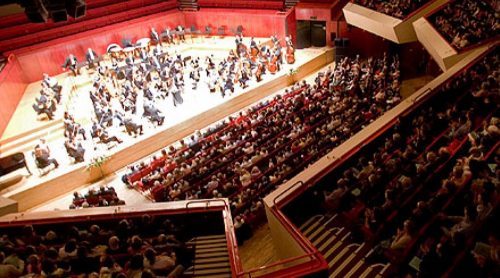The Hexagon is one of the Thames Valley’s premier entertainment venues, hosting music, sport, exhibitions and more. It opened on 5th November 1977, followed 2 days later with its first public performance, a production of Gilbert and Sullivan’s “The Gondoliers” by the Sainsbury Singers.
The Hexagon was build as part of a plan to develop a new “heart” of Reading. Originally the plans only included the civic centre (comprising council offices, a magistrates court, shopping mall, police station and arts space) but after public debate is was decided that a unique, purpose-built venue for the arts was needed additionally, hence the construction of the Hexagon. A council press release stated that it would “enable those living in a wide area around town, for the first time, to enjoy close at hand, a complete range of entertainments”.
The building was designed by Robert Matthew and Johnson-Marshall, they had worked on several large scale projects including York University, Holyrood Building and the National Museum of Libya. It was built by Bovis Construction Ltd and took its hexagonal design from the Civic Offices next door. Before its grand opening, a competition was held asking members of the public to suggest suitable names for this new and unique arts centre. Catherine Ellis, a 12-year-old girl, suggested “The Hexagon”, winning the competition and providing the venue with its iconic name.
The Hexagon has hosted a range of sporting events, and has made a notable contribution to the world of snooker. In 1981 it hosted the State Express World Team Classic. Then, in 1984, the Snooker World Open moved to the Hexagon, where it was renamed the Snooker Grand Prix. The competition was held at the Hexagon every October until 1993. The 1985 final between Steve Davis and Dennis Taylor lasted 10 hours and 21 minutes making it the longest one-day snooker final ever, thus adding this record to the Hexagon’s history.

